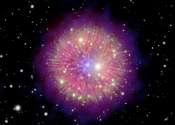How NASA's Roman Telescope will measure the ages of stars
Guessing your age might be a popular carnival game, but for astronomers it's a real challenge to determine the ages of stars. Once a star like our sun has settled into steady nuclear fusion, or the mature phase of its life, ...









